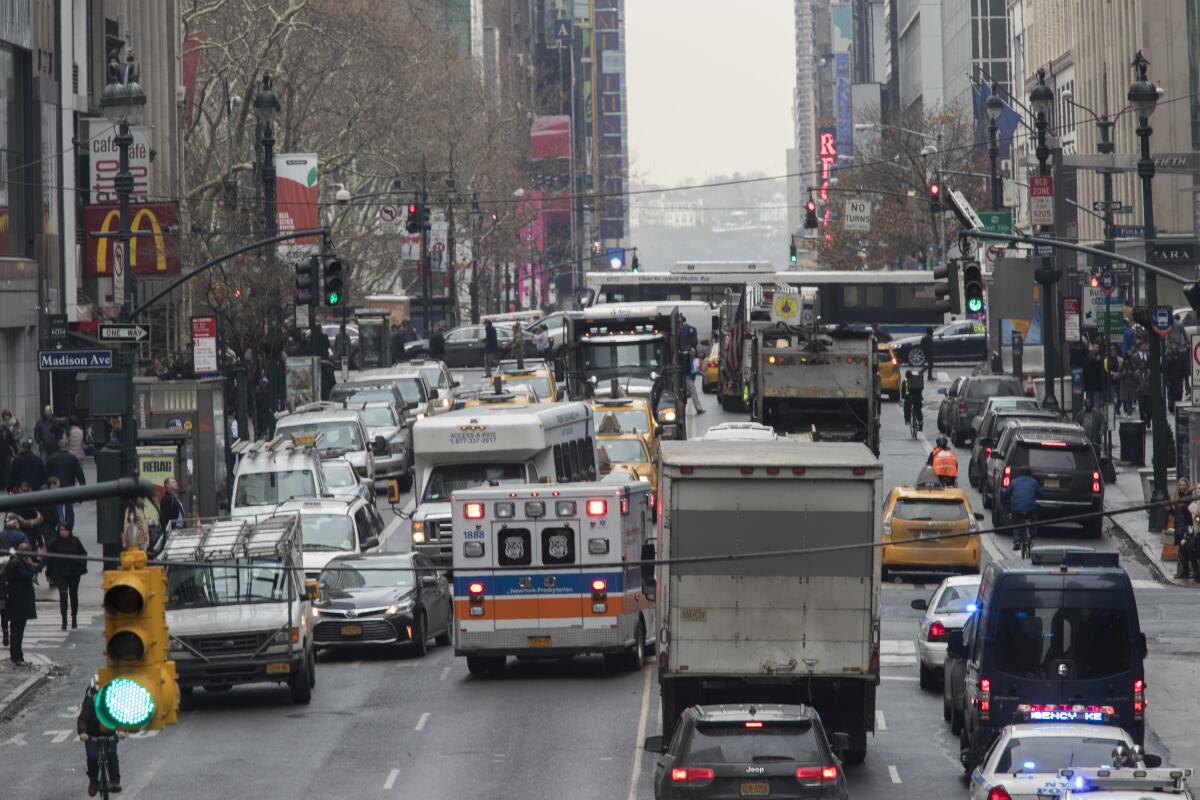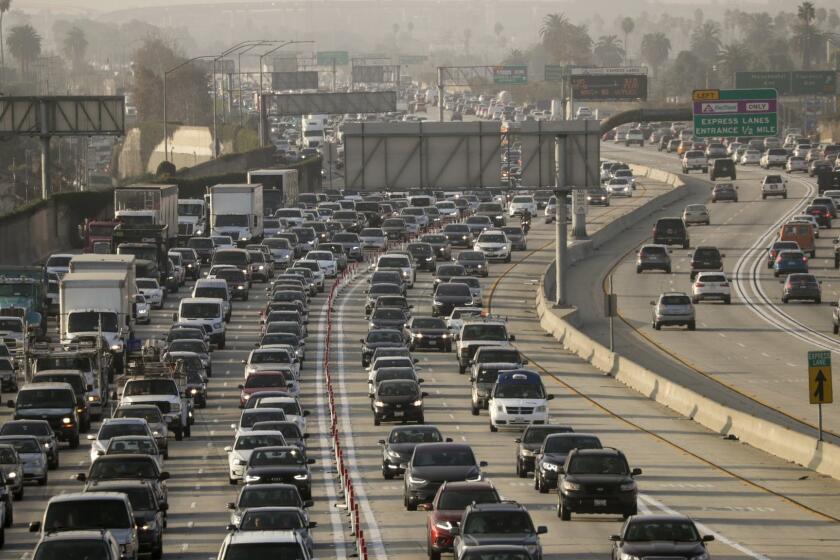Editorial: New York City is moving forward with congestion pricing. Los Angeles should be next

The Biden administration this month gave New York City the green light to move forward with the nation’s first congestion pricing system that would charge motorists a toll to drive into the city’s central business district.
New York’s Metropolitan Transportation Authority still has to work out the details — including toll rates, discounts and exemptions — but officials anticipate congestion pricing will take effect in spring 2024. The idea is to discourage people from driving into the busiest part of the city, thus removing some cars from traffic-clogged streets and reducing vehicle pollution. The toll revenue would be used to improve the region’s aging public transit system.
New York will be the first city in the U.S. to adopt a cordon area congestion pricing scheme, in which people pay to drive into a designated area, but it shouldn’t be the last. It’s a model used in London and Stockholm that has helped cut the amount of time spent idling in traffic, but the U.S. has been too slow in embracing a proven tool to unclog roads.
It’s a widely held, even cherished, belief in California that freeways should be free.
Los Angeles leaders are considering a congestion pricing pilot project. The idea was raised in 2019 by then-Los Angeles County Metropolitan Transportation Authority CEO Phil Washington, who suggested rush-hour tolls on drivers could help raise billions of dollars to accelerate construction of transportation projects for the 2028 Olympics and even be used to eliminate bus and train fares.
Metro leaders have since scaled back the vision for congestion pricing, and are instead looking at tolls as a way to reduce traffic and improve transit options in specific areas. The agency is working on a study analyzing three potential locations for pilot projects: on roads and freeways into downtown; on Interstate 10 between downtown and Santa Monica; and on freeways and canyon roads that cross the Santa Monica Mountains between the San Fernando Valley and the L.A. Basin.
The study, which is expected to be completed early next year, also will look at exempting carpools and low-income motorists from paying the toll, and how to spend the revenue to improve transit into the tolled areas. Then Metro’s Board of Directors will decide whether to move forward with a pilot project and, if so, with which location.
For the last several years, Culver City has become a model for forward-thinking urban design, supporting a transit-friendly walkable, bikeable downtown. Why go backwards now?
Metro officials are eyeing 2028 as a target date to begin the pilot. The agency would still need to go through environmental review and get permission from the state Legislature and the federal government, and that could depend on who is in the White House. New York City expected to launch its congestion pricing program in 2021 but was delayed three years because of the pandemic and the Trump administration’s refusal to act.
Congestion pricing isn’t a radical concept. Regions across the country, including Los Angeles County, have approved a version of it with express lanes that are free for carpools and allow single-occupant vehicles to use them for a toll. Along with London and Stockholm, Singapore and other cities around the world use tolling to reduce traffic in their commercial districts.
It’s a response to an unavoidable truth — most cities are built out and cannot widen roads or freeways, nor would that help. Adding car lanes encourages more people to drive, and eventually the route gets clogged again.
However, a toll can quickly change behaviors and traffic patterns. The price can make people reevaluate the trip. Is there an alternative, like taking the bus or train? Is it possible to travel in off-peak hours or avoid the trip altogether? It takes just a small percentage reduction in the number of cars to ease congestion.
It’s good to see New York City’s program is moving forward. Los Angeles should watch, learn and go next.
More to Read
A cure for the common opinion
Get thought-provoking perspectives with our weekly newsletter.
You may occasionally receive promotional content from the Los Angeles Times.












